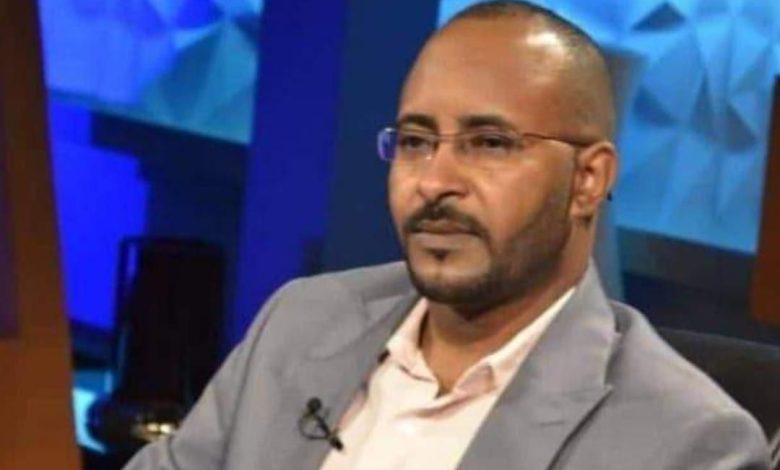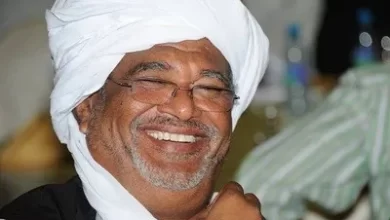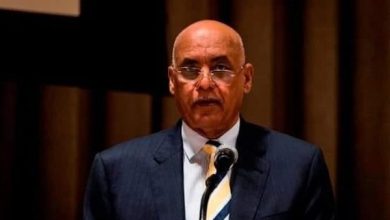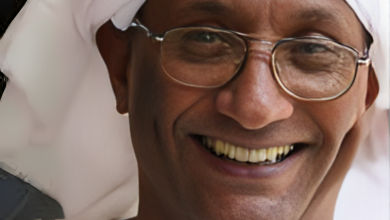External Intersections and Mysterious Facts in Sudan War!

By: Azmi Abdul Razek
The war in Sudan enters its second year with no signs of a solution on the horizon (French News)
On the morning of Saturday, April 15, 2023, the Sudanese were surprised by the sounds of raining bullets and military aircraft, and troop carriers roaming the streets of the capital, Khartoum, while the Rapid Support Forces (RSF) took control of the Republican Palace, the airport, and the Radio and Television building, through their guard units there, and absolutely no one could have imagined that the fighting expands to include most of the states of Sudan, and that the war continues for a full year, without answers to troubling questions regarding the first bullet, how it happened, and who is behind all this devastation, and why?
Zero hour fires
At approximately nine o’clock in the morning, there were about six hundred Land Cruiser pickup trucks reinforced with launchers and anti-aircraft missiles, surrounding the Army General Command and the guest house, the residence of the President of the Sovereign Council, Lieutenant General Abdul Fattah Al-Burhan with the aim of killing or arresting him, but that plan collided with a force from the Presidential Guard, which faced zero-hour fire with a commando.
The war actually began, a few days before that, when the RSF broke into Merowe Airport in northern Sudan, and captured a number of Egyptian officers, who were on a joint course, in accordance with the military cooperation protocol between Sudan and Egypt, and (Hemedti) or whoever planned it wanted to disrupt All military airstrips after gaining land, but he failed in that mission, and therefore the coup plan failed in its beginnings, for two reasons:
The first: They were unable to kill or arrest the army commander, and the second: the entry of military aircraft into the battlefield in the first hours, and striking the most important sites and camps of RSF .
The biggest conspiracy in the history of Sudan
The extent of external interference in this war is something incredible. Sudan – without exaggeration – is facing aggression from seven countries and regional and global organizations. The evidence is that the current government submitted an official complaint to the Security Council in this regard against the parties involved, and accused it of supporting the rebellion. Al- Burhan indicated in one of his speeches to the Sudanese people that the country is facing what he described as “the largest conspiracy in its modern history targeting its entity, identity, and the fate of its people.”
Perhaps what makes this information important on the ground is that the war is in fact taking place between the armed forces and thousands of foreign mercenaries who are now spreading inside Sudanese territory, infiltrating across borders outside the army’s control, and not even Hemedti, who is hidden somewhere, knows the size of that force whose numbers doubled several times after the war.
Some estimates indicate that more than three million weapons were introduced into Sudan in recent years, at a time when foreign countries prepared thousands of mercenary fighters and threw them into the Sudanese war.
This has been shown in many video clips and photos, and in the confessions of the prisoners themselves from Central Africa, Chad, South Sudan, and Ethiopia, all of them wearing RSF uniforms, sneaking through movements and waves of panic in the states of western and central Sudan, and at the head of these is the leader of the “Oppressed Struggle” movement, Chadian Hussein Al-Amin Gojo.
While international press reports spoke of monitoring the movements of members of the Russian Wagner company in the Darfur region, this geographical area of the land of Sudan has become a hotspot, in which the fires of the great powers, specifically Russia and France, intersect.
The European Union’s dilemma
Many of these mercenaries were paid the price, but they do not know why they are fighting? Returning to the circumstances of assembling this cross-border African force, it can be said: (Hemedti) invested in the role assigned to him by the European Union in combating illegal immigration, and so they overlooked his crimes in Darfur, and allowed him to open camps in the border areas between Sudan and some neighboring countries, and to gather African immigrants in those camps and include them in RSF, so that it became far away. This is a multinational huge force, with Western funding, ostensibly under the control of the Dagalo family.
To the point that those forces doubled in numbers in just three years from 27 to 200 thousand fighters, and most likely the goal of that force was to control – by force of arms – a number of African governments, whether by coup, or by direct attack, and to create what is known as creative chaos !
These are the same forces that participated in the overthrow of Omar Al-Bashir’s regime, and in carrying out coups in many African Sahel countries, and today they are attacking the Sudanese army in El-Fasher, El-Obeid, and Khartoum, and many of them were trained in urban warfare, which means that the conspiracy was hatched in stages, and it wanted to get rid of the army. The Sudanese, as the solid core of the state’s cohesion, and then devoting, after that, to the project of collecting and plundering Sudan’s resources.
White Contractor Scenarios
Because the contractor who designed the scenarios for this war preferred not to be exposed, he worked to poison people’s minds with political propaganda, and gave his war deceptive slogans such as bringing democracy and eliminating the state of 56, the history of Sudan’s independence.
And dressing up in revolutionary decorations, with the soldiers unleashing their hands to torture prisoners, degrade their honor, destroy infrastructure, deprive everything that is inherited, and commit horrific war crimes, which human rights organizations did not care about; May Europe enjoy prosperity and tranquility, after filling its coffers with gold, crops, and forest hides, and benefiting more from the water and fertile agricultural lands of Sudan, especially since water wars loom on the horizon because of the food crisis.
The preliminaries of the conflict over shares of the Nile River water, and the dispute over the construction of the Ethiopian Renaissance Dam, have surfaced, which threatens Egyptian and Sudanese national security, and thus Sudan needs to form a strategic vision to deal with this crisis.
Chaos and the bill of complacency
There is partial or comprehensive chaos depending on the beneficiary’s desire for the RSF to remain – partially – subordinate to him or to be completely destroyed. It is likely that Hemedti will be eliminated after his purpose has been exhausted, and the RSF will be retained to complete the mission. The conspiracy needs obedient agents without ambitions. Political, a sample of them appeared at the humanitarian conference hosted by Paris these days, regarding the situation in Sudan.
One of the characteristics of public life in Sudan is indifference and indifference, and therefore the Sudanese people pay the bill for this complacency. The war has forced millions of Sudanese to move far away, which is inseparable from the details of the conspiracy, to push the Sudanese to flee their country under duress, and settle other population groups, in the context of change. Demographics, and the division of Sudan into several states, as happened in the south and ended with the establishment of a failed state and leaving it to its bleak fate.
Perhaps the situation of Sudan that is stimulating this devastation was summarized by the late thinker Abu Al-Qasim Haj Hamad, which is: “a traditional Arabism that is difficult to open up versus a soft-sided Africa,” but who among the patriots cares! Where are the brothers of Sudan and the compassionate ones? To help it overcome this historical impasse?
Azmi Abdul Razek
Sudanese writer and journalist



